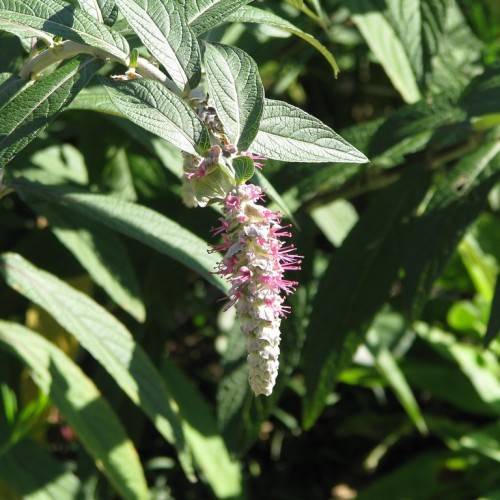
weeping buddleja
Rostrinucula dependens
Cycle:
Perennial
Watering:
Average
Hardiness Zone:
7 - 10
Flowers:
Flowers
Sun:
Full sun
Leaf:
Yes
Growth Rate:
Low
Maintenance:
Moderate
Drought Tolerant:
Yes
Salt Tolerant:
Yes
Invasive:
Yes
Care Level:
Medium
watering
Weeping Buddleja (Rostrinucula dependens) should be watered around twice a week, allowing the soil to dry out slightly between waterings. It's important not to wait until the soil is completely dried out—this can damage the roots of the plant. During the summer months when the plant is actively growing, it's generally best to water deeply once a week, and to check the soil 2-3 inches down before watering if the weather has been hot or dry. During the cooler, winter months, the plant will need less water and should only be watered as needed. While this type of Buddleja does not need to be misted, a light spray of water on the leaves during the hotter months can help keep them lush and healthy looking.
sunlight
Weeping buddleja (Rostrinucula dependens) need 6 - 8 hours of direct sunlight a day to thrive. The best time for sunlight is approximately an hour to an hour and a half after sunrise, and an hour or 2 before sunset, when the light intensity is reduced and heat is less prevalent. This plant does not do well in shade as it can't take in enough sunlight then to stimulate flowering. Additionally, this plant should not be overexposed to sunlight as leaves will start to burn.
pruning
Weeping buddleja (Rostrinucula dependens) should be pruned twice a year, once in the spring and once in late summer or early fall. In the spring, it should be pruned to encourage growth and create a fuller and denser plant. This can be done by removing any dead flowers or leaves, cutting back old branches that have lost their vigor, and pruning back shoots that have become overly long. In the late summer or early fall, weeping buddleja should be pruned to control growth and shape the appearance of the plant. This can be done by thinning out the top of the plant by 5-10%, removing dead or diseased branches, and cutting back any overly long or stray branches. Doing this in late summer or early fall allows sufficient time for the plants to establish the new growth prior to winter.
